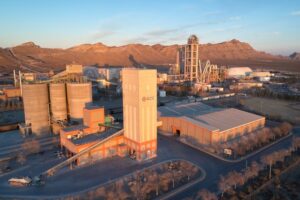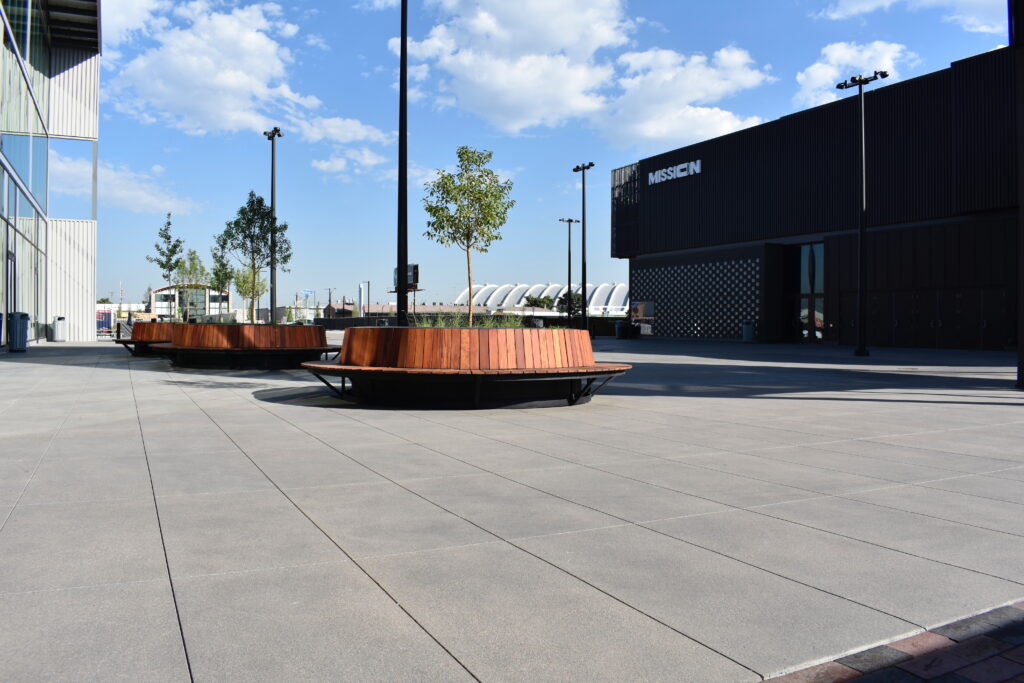
A while back, I was addressing a group of architects about decorative concrete and its many possibilities. It was very well received and ended with the usual questions about color and details. However, one question stuck with me. One architect asked about concrete’s environmental impact and how I felt about concrete sustainability.
I thought he was referring to concrete’s many green attributes, so I got excited, put on my LEED AP hat (Leadership in Energy and Environmental Design Accredited Professional) and started rattling off how great and sustainable concrete is. Unfortunately, that’s not what he was referring to.
As you may have heard, concrete has a bad rap. If you Google “how concrete is destroying the Earth” you’ll find many articles proclaiming concrete’s crimes against humanity. Among its evil attributes is that it’s a huge carbon dioxide emitter. Yes, the production and transportation of concrete emits carbon dioxide and it’s an area our industry can improve upon.
Before I completely leave this topic, did you know that concrete is carbon neutral in the complex carbon cycle? Concrete production emits CO2, but concrete-in-place absorbs CO2. The Portland Cement Association has a fascinating article on this that I encourage you to check out.
LEED by example
As long as Earth’s population keeps growing, construction will keep happening. So if we must build, what should we build with?
Should we cut down more forests to build homes? Should we pave all hard surfaces with asphalt? I think we know the answers … but for some reason, people are blaming concrete for the destruction of the world.
So let me put my LEED hat back on. I’ve spent hundreds of hours studying concrete sustainability and how itfits into the green building picture. I don’t think it should be ignored. Many people point out the flaws of the LEED program, but every program has flaws and I think the good outweighs them.
What I like about the U.S. Green Building Council’s LEED program is that it’s research based, it looks at several aspects of construction as a whole instead of just focusing on one element, and it’s revised to adapt to the changing world around us.
Let’s look at concrete in its entirety to determine how it fits as a sustainable building product.
Concrete and the LEED rating system
My expertise is in LEED BD + C (Building Design and Construction), and here is how I see concrete fitting into the LEED rating system either directly or indirectly:
Integrative process
This credit is one of my favorites because it encourages people to talk before things are built. I like to talk to architects before a project is fully designed and before it’s out to bid.
If we can overcome sustainable and other challenges before anything is ever built, we’ll automatically reduce waste and minimize costly mistakes. This isn’t just for concrete but should be done for all construction. Per the LEED reference guide, the intent is “to support high-performance, cost-effective project outcomes through an early analysis of the interrelationships among systems.”
Location and transportation
This credit category focuses on making sure new construction is accessible in various ways. Its goal is to limit how much people drive around to get to and from the site and to other places. Places that have things like bike storage, are close to alternative transit and are close to other amenities rank higher.
The USGBC guide states its intent is “to avoid development on inappropriate sites. To reduce vehicle distance traveled. To enhance livability and improve human health by encouraging daily physical activity.”
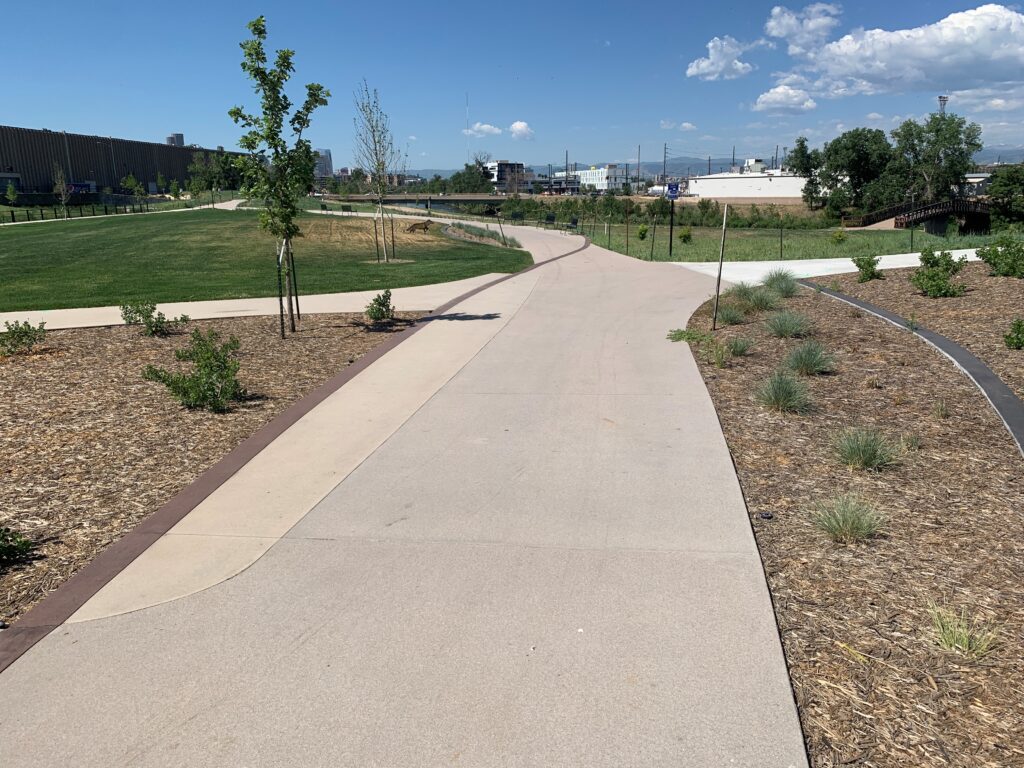
Well, guess what people? Concrete forms the sidewalks for bikes. It’s also what usually connects an office building to retail stores, residential units, restaurants and grocery stores. Concrete is the framework that holds dense development together in a way that can reduce vehicle usage and encourage people to get physically active outside.
Sustainable sites
This category naturally follows location and transportation, but dives more into the site itself. It includes protecting and restoring the habitat, heat island effect, light pollution, construction activity and more. Where does concrete fit in? Specifically:
- Rainwater management – This is where pervious concrete systems can come into play. With adequate design, pervious concrete can help contribute to a site’s rainwater management. This can either be the pervious Rice Krispies-type concrete or other systems like Grasscrete that have voids in the concrete which, unlike traditional paving, allow water to penetrate the slab.
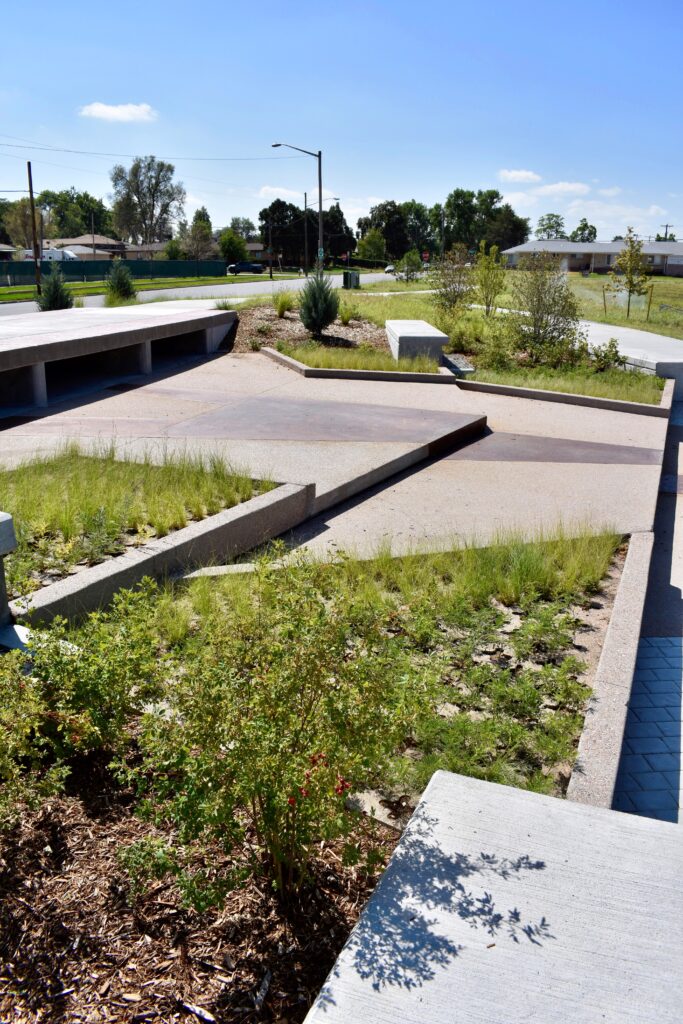
- Heat island reduction – When choosing materials for parking lots and other site paving, a more reflective product will help reduce the heat island effect. Dark products like asphalt absorb heat and cause the heat island effect, where lighter-colored materials (let’s say like concrete) are more reflective and don’t absorb the heat.
This is a fascinating topic if you want to research it. Darker colored roads and parking lots negatively impact our environment significantly. You may hear people refer to a product’s SRI, Solar Reflective Index.
For new materials, they want an SRI of at least 28 and encourage open-grid paving again (which if designed properly can also earn the rainwater management credit). New gray concrete is around 35, new white concrete is around 70 and asphalt is around 6.
Integral color and finishing impact the SRI value, but those are close measures for comparison. LEED measures both roof and no roof when looking to give credit for heat island reduction. This is why many LEED buildings now have more activated “roofs” with landscaping and other amenities.
Water efficiency
This credit is clear as well. The goal is to reduce how much water is used inside and outside the building. So how does concrete play a role in this? It doesn’t directly, but it could contribute to the exterior design to reduce outdoor water use.
Energy and atmosphere
This category dives into a site’s energy usage. Concrete doesn’t always directly impact this, but it could be used as a material that encourages lower energy consumption for a building’s walls and floors. It can also contribute when determining finishes. A highly polished concrete floor is more reflective and requires less artificial lighting.
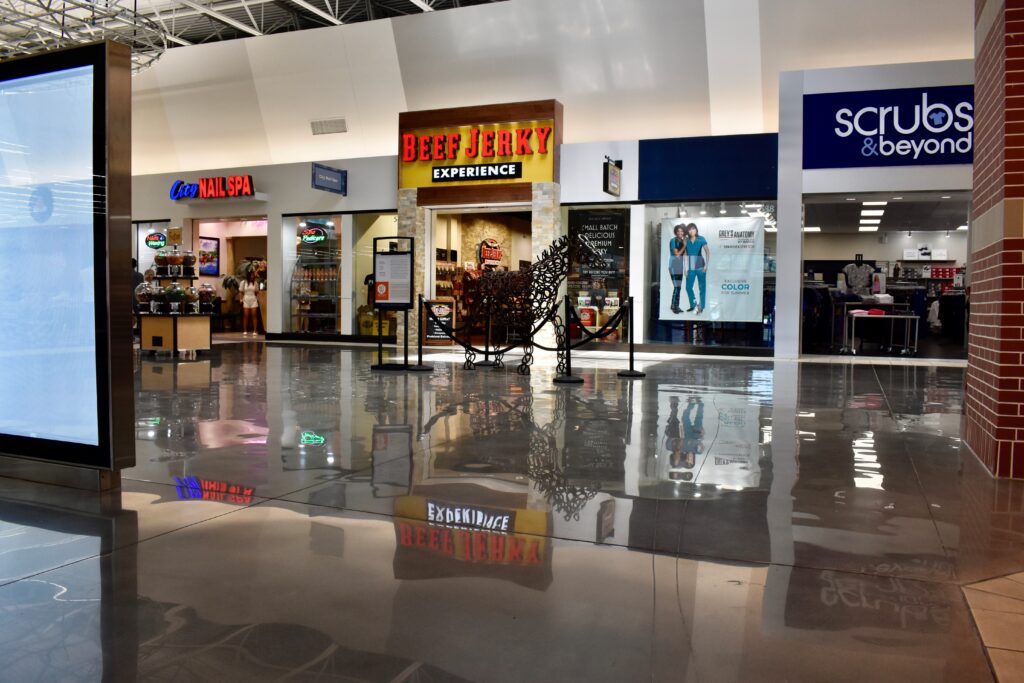
Concrete: The material
Materials and resources
Most people jump directly to this category when talking about concrete and sustainability. But, as you have already read, concrete can contribute to many other categories with careful planning from the design and ownership team.
Let’s dive into the material itself and the materials and resources categories it can fit into:
- Prerequisite: Construction and demolition waste management – This one takes some common sense: reuse what you can and don’t be wasteful. If there is demo debris, can any of it be reused as pavers or for a sub-base? What if you’re building, can you reuse anything before tossing it? If you’re tossing it, sort it and recycle what you can. There is also a credit called “construction and demolition waste management” that takes this concept even further.
- Building life-cycle impact reduction – This one is my favorite. Life-cycle cost refers to how often you must replace an item and what it costs over the product’s overall life cycle.
The life-cycle cost includes the initial installation, maintenance and removal. It also factors in how long it lasts. Ideally you want something that lasts a long time with minimal maintenance. Any product come to mind?
Examples
OK, let’s run this up the flagpole. How often do you have to replace carpet? Every three to five years depending on traffic. How easy is it to clean and how much does cleaning cost? How about outside? What does asphalt cost? How often does it need to be repaired or replaced? How about crusher fines? What about sod?
You can Google all day for life-cycle comparison charts. One thing that cracks me up is so often concrete is left off these lists. Especially for flooring. Why do I find this funny? What are a lot of buildings made of these days? Concrete. What is the structural floor? Concrete. Why on Earth would you cover it with something that you need to constantly replaced and maintain, when you can use what’s already there?
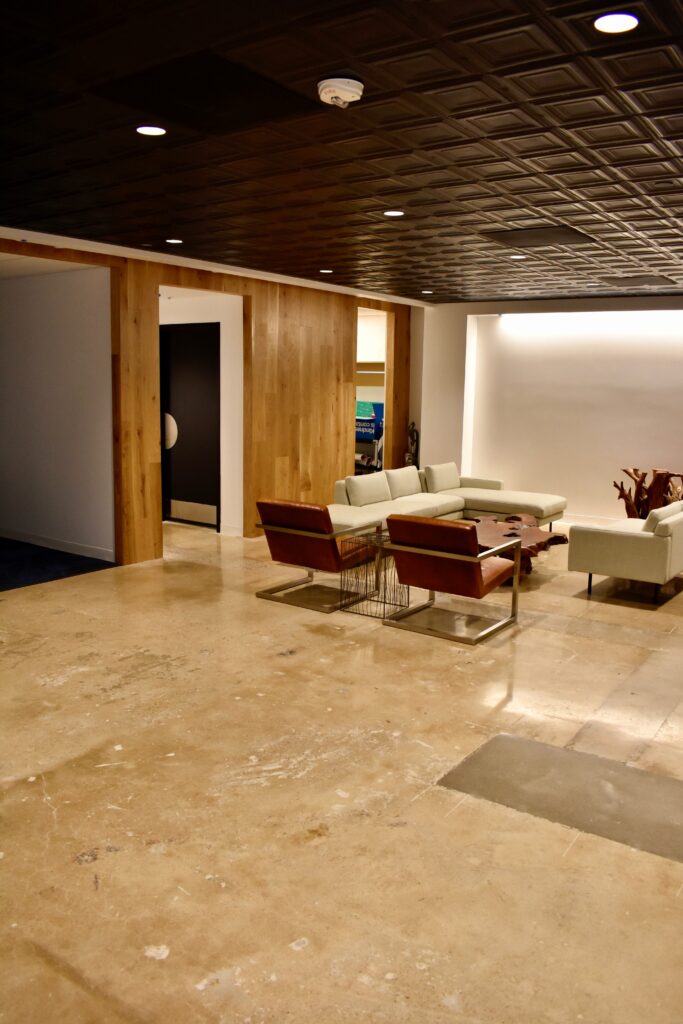
To me this is a LEED no-brainer. Don’t introduce another material to the project. Use what’s already there. Just do it right and treat it as a finished product that’ll last the building’s lifetime. In LEED, there’s even a credit to reuse part of the existing building.
Need I say more? Hello, beautiful concrete floors!
- Building product disclosure and optimization: Sourcing raw materials – Here is where fly ash, recycled aggregates, recycled glass and other concrete mix ingredients come in. The material itself can be made of sustainable ingredients and come from wholesome companies which can also contribute to the material ingredients credit.
Concrete can contribute
Indoor environmental quality
This category focuses on ensuring building occupants are breathing clean air.
- While we don’t directly contribute to the HVAC and ventilation points, we can certainly contribute to the low-emitting materials credit. Choose sealers and stains with a low VOC. Pretty easy, right?
Luckily, we don’t use a lot of adhesives with high VOCs like some other flooring options. For health care and schools, IEQ credit even applies to the exterior where they prohibit hot mopped asphalt roofing and coal tar sealants for paving.
- We can also contribute to thermal comfort credit with elements like radiant flooring.
- Interior lighting and daylight – With a highly reflective floor (like polished concrete), interior lighting can be minimized and exterior sources of lighting can be optimized.
- Acoustic performance – This one would take an acoustical engineer’s expertise. With the right design and setting, concrete can help minimize exterior noises and improve interior acoustics.
Innovation
This is another one of my other favorites for decorative concrete and is wide open for creativity. How else can decorative concrete contribute to the overall health and well-being of the building and its inhabitants?
Innovation is where outside-the-box thinking can get you bonus points. What about using old beams from the site to form a wall? How about seeding an old stain glass window into a concrete surface for a decorative historic flare? This is where the creativity of the owner, designer and concrete contractor can really shine.
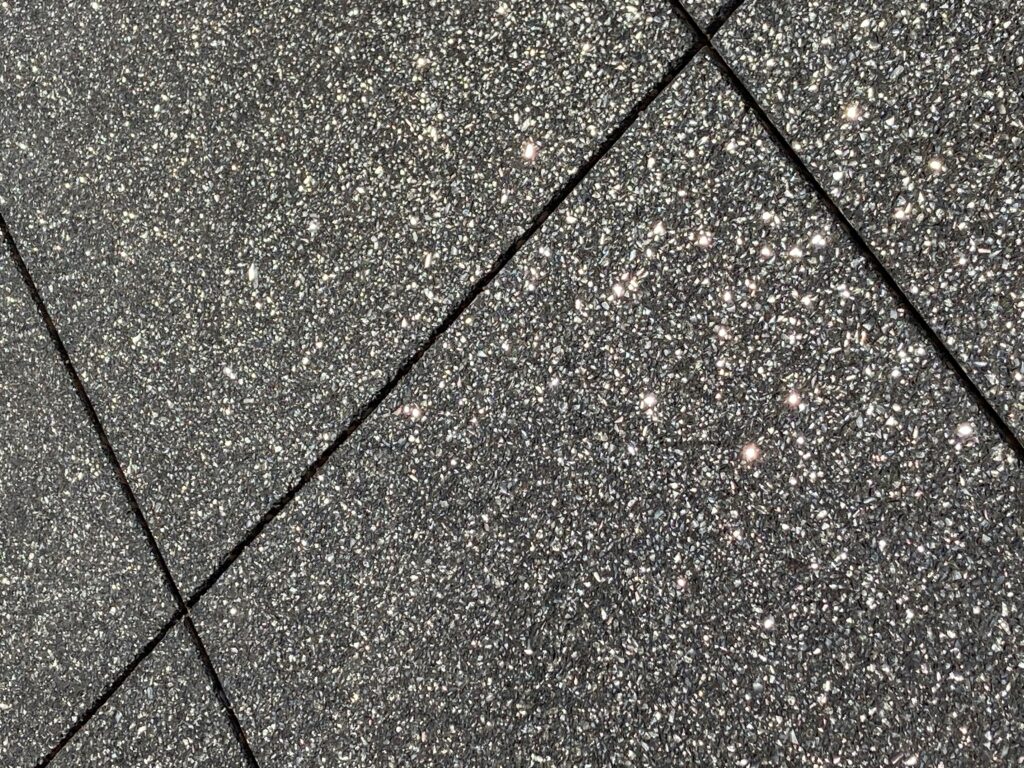
Regional priority
This one also lends itself to creativity. This credit looks for ways the construction addresses a regional issue whether it’s social, environmental or health related.
The USGBC is not the end all, be all for sustainable construction, but it’s a good guide that outlines sustainable practices. When put into perspective of the building as a whole — including its site and location — concrete is pretty awesome, and I don’t know what can beat it from a construction sustainability standpoint.
So continue to place concrete, make wise choices when doing so, and help the design team use it in a sustainable manner. As such, concrete should outlast most other materials, connect the community, and encourage overall health and well-being.




